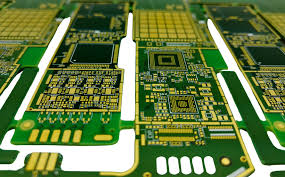Rapid Iteration Cycles
Prototyping using PCBs (Printed Circuit Boards) drastically minimizes the time taken with design iterations. A redesign of a final product Due to the time, it is often weeks or months before a design flaw with be identified in a final product. Changes can be made quickly on PCB prototypes and retested within days. A company, for instance, can generate and evaluate many prototype iterations in the time it takes to produce one run of end products. A survey of Electronics Weekly projects a 30% average/reduction in development time for companies prototyping quick PCBs.
Increased Precision and Error Diagnosis
Early in product design and development cycle, having PCB prototypes very useful even for finding errors. This saves on costs as well time because those same errors would end up being corrected in the later stages which is a waste of time, assisting early detection saves costs and time. A consumer electronics company saw a 45% decrease in error rate with the use of PCB prototypes than their projects without it, according to a 2020 case study Detecting for short circuits, mistakes in component placement, or potential heat issues earlier can only make the end product more reliable.
Cost Efficiency
Using PCB prototypes is a great way to test your product while being cost-effective. The figures can be large for a prototype, but they are small in proportion to the costs incurred when producing a defective design on an industrial scale. According to IPC (Association Connecting Electronics Industries), it is ten times more expensive to address a design mistake after production when compared with fixing early in the prototyping process. In addition, this means businesses can steer clear of the high-costs that ethical issues bring such as recalls or customer complaints which can consequently lead to large-scale damage to brand value.

Faster Time to Market
It makes products to launch fast by using PCB prototypes. Speed is of the essence in a very competitive environment today. This allows companies to bring products into the marketplace much quicker by shortening their testing windows, a considerable competitive advantage. Another tech startup eloquently concluded that the ability to prototype allowed them to bring a product launch forward by three months and prioritise market share at an earlier phase than their industry without it.
Open Stakeholder Outreach, Input
The process of testing is hastened by prototyping and at the same time, stakeholder involvement is amplified. Showing a physical, working PCB prototype to your potential investors, clients and development team means you are able to receive feedback on the design in much less time than if you were simply relying on theoretical or computer simulation models. Immediate feedback improves product design, ensures correct deliverables, and bolsters the product market fit.
pcb prototype technology allows quick moke-up of products. It supports fast iteration, increases precision in design, saves costs, shortens the time-to-market and fosters stakeholder participation. The firms who follow it, result in not only improving the quality of a product but also enhance their competitive stance in the market.